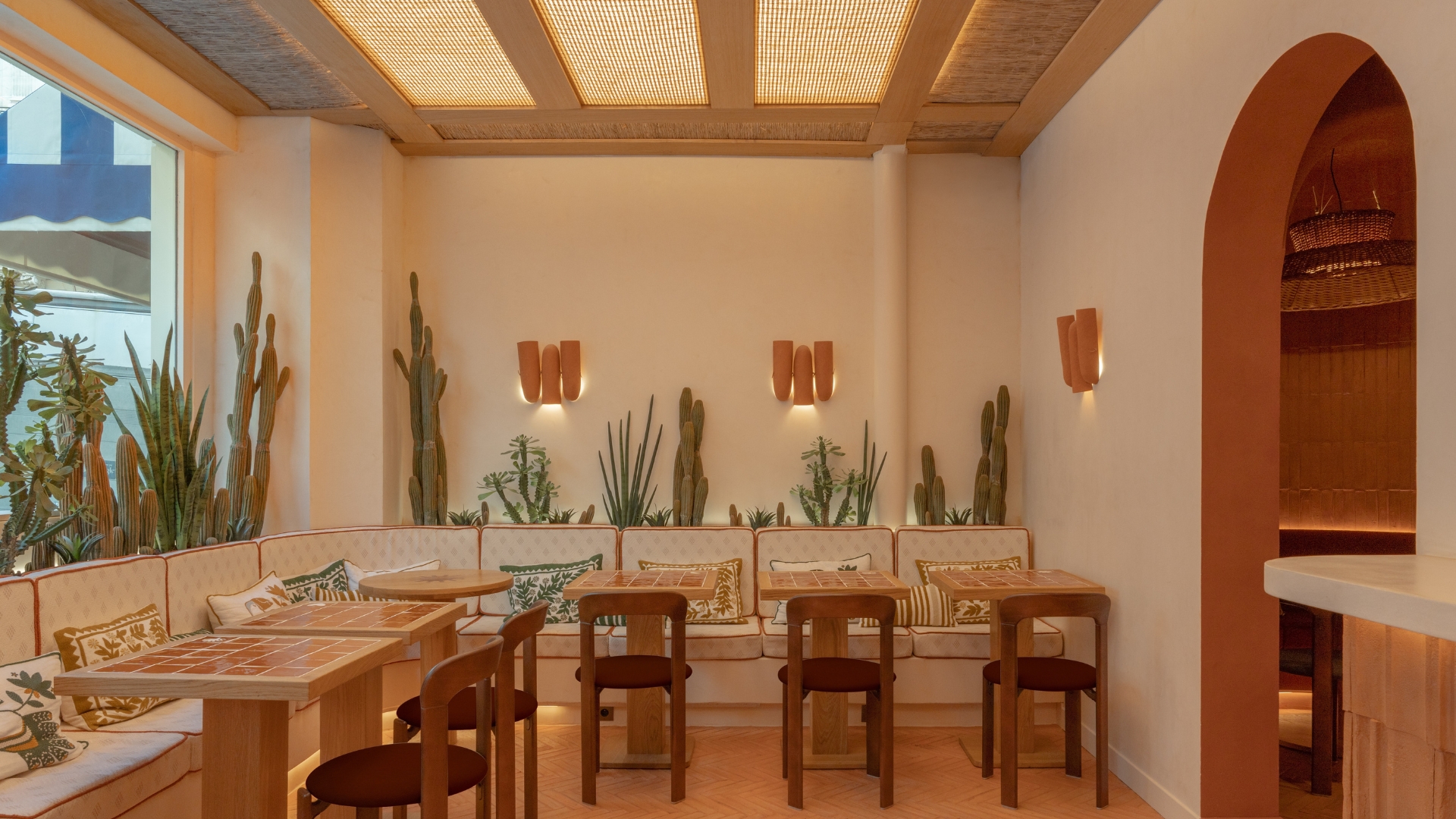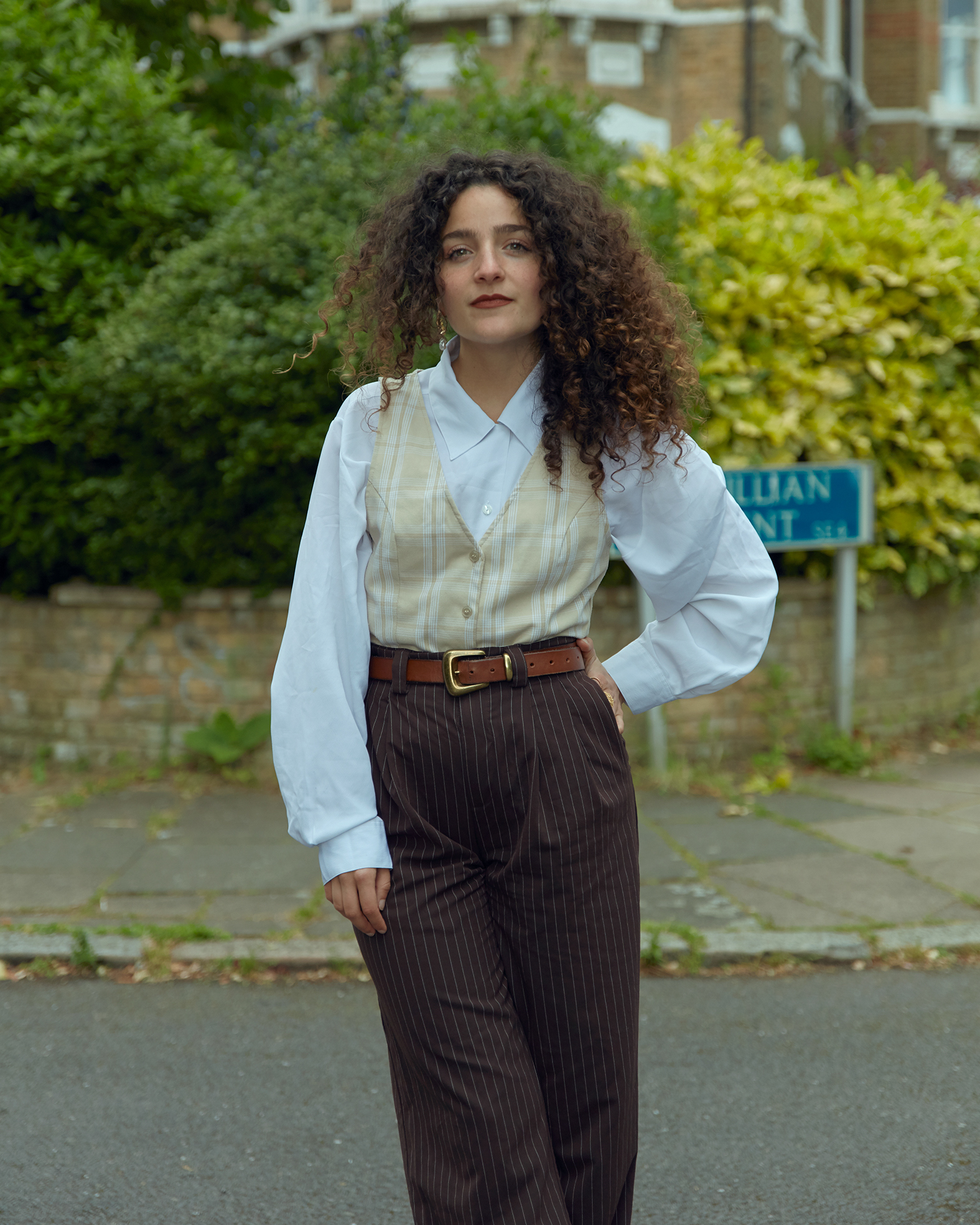Great Taste — Paris' New Atmospheric Mexican Restaurant Tio Offers a Modern Take on Latin American Style
In Paris' 8th arrondissement, the new food destination pairs designer Sophie Lacroix's craftsmanship-led, sophisticated aesthetic with a warmly suffused ambiance and equally beautiful food


Great Taste is the Livingetc column spotlighting the human stories behind the restaurants where the interior design is as good as the food, as told by the chefs, designers, and founders who contributed to their success.
Nestled in one of the many palatial stone-and-wrought-iron buildings constellating the French capital, Tio is one of those food destinations that seems to have got it all. It is chic but relaxed; imaginatively designed yet conceived in line with Parisian artisanry's standards of excellence; exudes the lingering glow of a tropical destination but promises to give back to the community it belongs to, favoring local connections over shallow escapism. Perhaps most importantly, its interior design isn't a boilerplate for just any old restaurant, but carefully created to amplify the flavor of its vibrantly presented, contemporary take on Mexican cuisine.
A new, spirited addition to the area's rigorously French gastronomic fabric, Tio gives Mexico's tantalizing street-food culture the design treatment, integrating locally sourced, fine materials, sinuously drawn lines inspired by nature, and golden hour-like lighting into an absorbing Latin American fantasy. The creative brainchild of Paris-based modern interior design agency Bureau Lacroix, the restaurant saw Belgian-French founder Sophie Lacroix draw on her appreciation of France's craftsmanship to give birth to a destination that could, simultaneously, attract the venturous traveler and the most traditionalist of Parisians.
Below, the designer takes us inside the Tulum-inspired rooms of Tio, discussing influences and collaborations core to the project and retracing its story from start to finish.

How did you first become involved with Tio and what convinced you this was the right project for you?
Sophie Lacroix: Tio's owner Idriss Mansour and I met a couple of years ago while I was working on Manko Athens, one of my early Bureau Lacroix projects. It is a modern Peruvian restaurant overlooking the beach with an atmosphere and flavors similar to the ones key to Tio, so when he decided to open his own, Mansour naturally thought of me. I was honored to get on board: he is the artistic director of the iconic Manko Paris, the restaurant's Parisian location, and has always stood out to me for his inspiring brand vision. At Tio, we matched Mansour's graphic identity expertise with my architectural one to bring diners a full-immersion into Mexican street food that elevates it in its most subtle details.

At 28 years old, Belgian-French designer Sophie Lacroix has quickly established herself within the design industry. While studying at Penninghen, she won the "New Design Talent" prize at Paris Design Week in 2017 for her Iris pedestal table. After graduating with honors in 2019, Lacroix worked with the renowned design duo Gilles & Boissier on international residential projects. In 2021, she founded her own agency, Bureau Lacroix. The agency has gained recognition for designing notable Parisian restaurants Siena and Dandino, as well as Toulon's La Brasserie Le Muguet. Currently, Bureau Lacroix is working on four Parisian restaurants, a beach club in Greece, and two residential projects in Paris.

What I love about restaurant is how it renders the vibrancy and warmth of Mexico without lapsing into the banal. What does it take to achieve that balance?
The Livingetc newsletters are your inside source for what’s shaping interiors now - and what’s next. Discover trend forecasts, smart style ideas, and curated shopping inspiration that brings design to life. Subscribe today and stay ahead of the curve.
SL: Impressive decor needs to feel welcoming, warm, and not overly built-up. Much of the end result comes down to your way of working with light and textures and your ability to combine the right materials. I am particularly interested in "the temporality" of a space — how a dining room transforms as we go from daytime into the night.
My approach blends technique with cinematic decor; I look at each restaurant as a new scenography, gradually unveiling its identity. Incorporating bespoke furniture is a must: for Tio, we drew tables and banquets from scratch. What we couldn't create ourselves due to constraints was supplied by trusted names within the industry, as for the Laurent Martin custom tables, Enamoura’s lamps, and chairs by Danish design house HAY.

What reflections informed the making of Tio?
SL: Being the restaurant in Paris, we wanted to recreate Tulum-style design without making it kitsch, so we went for organic lines and tones that give the space a natural feel. Collaborating with local craftsmen, artisans, and materials suppliers is another fundamental part of my practice: I always work with the people and mediums that are directly available to us in any given country, so as to have the lowest possible carbon footprint. In this case, we felt like boosting Parisian artisanat and eye for detail. Wherever we work, our goal is to marry every project's cultural reality with French savoir faire, developing bespoke installations that connect France’s design to the rest of the world.

What can you tell us about the selection of materials used on-site?
SL: The idea was to utilize artisanal materials from France that could unleash a credible, sumptuous Mexican vibe. The coating we chose for the textured walls, for instance, is by a French craftsman but its pale pink and terracotta shades are reminiscent of Mexico’s adobe houses architecture. We used a lot of French textiles too — all by fabrics, wallpapers, and wallcoverings label Élitis, embroidered with motifs inspired by Latin America’s rich textile tradition — while the bespoke banquets are enriched with upholstery by French interior designer Sabrine Pedrero.
Bureau Lacroix values organic, resistant, and consciously retrieved materials like wood, fabric, and ceramic. The Fornace Brioni bricks are the only Italian addition to Tio: when something can't be found right where we are, we go for the closest valid alternative that can offer it high-quality, raw, and durable.

What aspect of this project are you especially proud of?
SL: I absolutely love the private dining room (pictured below). It is a small, intimate space designed to welcome only five people. The room is almost entirely constructed from bricks, giving it a unique character. Hanging from the ceiling is a wide woven straw pendant, which infuses the space with a mellow, cozy atmosphere.

How do Tio's interiors complement its gastronomic offer?
SL: All tables were built to bring out the food: the earthy hues of their surfaces are meant to take the dishes to the fore. The actual plates are lightly colored to ensure that the food stands out against them. While we hope the interior design experience of the restaurant will be as immersive and pleasing as possible, we don't want it to outshine the genuine, succulent products that serve as the real heart of Tio.

How do you hope the restaurant will contribute to the surrounding community?
SL: Tio rises in the 8th district — a very chic, culturally influential Parisian neighborhood. It is the kind of place people go to when they crave new discoveries, be that a restaurant, a gallery, or an unexpected boutique, which makes it the ideal location to integrate some Mexican flavors into. Tio brings a real twist to the classically French 8th arrondissement: it has a diametrically opposite atmosphere to the one you breathe out in the nearby streets, punctuated by clean, regal beige Haussmann buildings. Tio's ambiance is a journey in itself: with its orangey, radiant feel, it absorbs you completely, while its researched, elegant finishings make it a refreshing alternative to other traditional restaurants.

Why should people give it a go?
SL: At Tio, there are three different ways to taste the food: you have the show kitchen, where you can see chef Melio Oriundo Chavez at work first-hand; the bar, which feels authentically Latin American and caters to those looking to share a meal with friends; and the private dining room, your intimate option. These three spaces are uniquely distinct, each of them making way for a different interaction with Tio’s menu, community, and interior elements. Each time you come here, you live it differently, which I think is a great added value to this restaurant.


Gilda Bruno is Livingetc's Lifestyle Editor. Before joining the team, she worked as an Editorial Assistant on the print edition of AnOther Magazine and as a freelance Sub-Editor on the Life & Arts desk of the Financial Times. Between 2020 and today, Gilda's arts and culture writing has appeared in a number of books and publications including Apartamento’s Liguria: Recipes & Wanderings Along the Italian Riviera, Sam Wright’s debut monograph The City of the Sun, The British Journal of Photography, DAZED, Document Journal, Elephant, The Face, Family Style, Foam, Il Giornale dell’Arte, HUCK, Hunger, i-D, PAPER, Re-Edition, VICE, Vogue Italia, and WePresent.